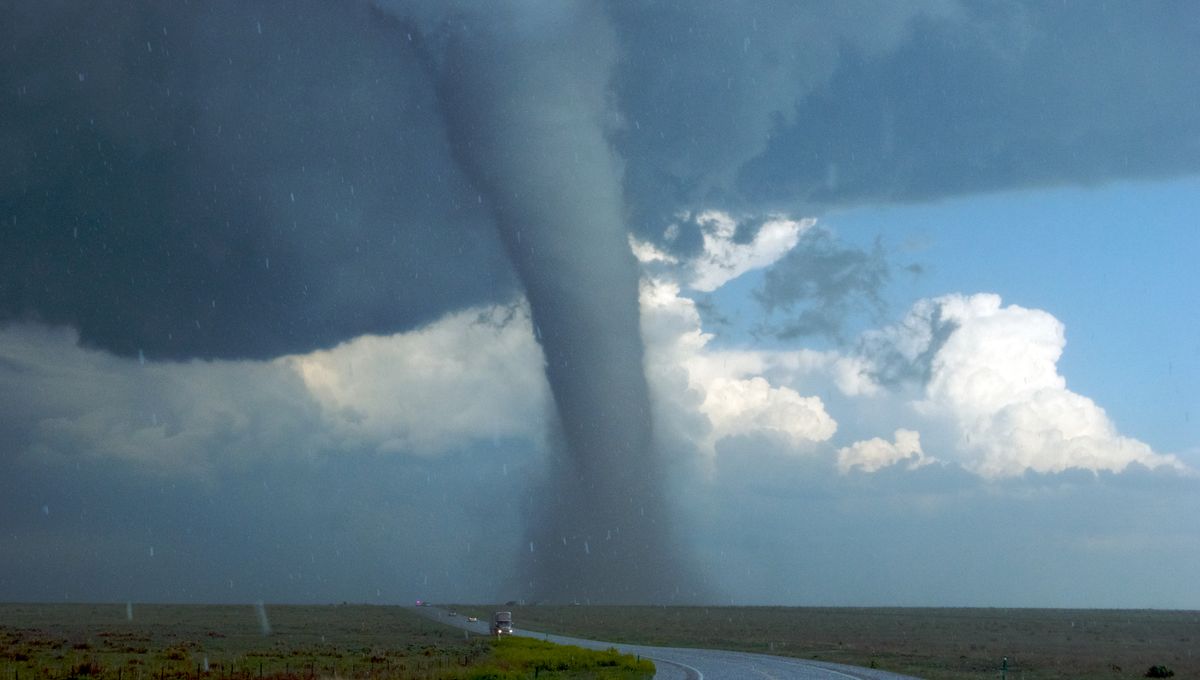The Southern Plains of the United States are currently in the midst of “tornado season,” but this year’s peak of severe storms has already brought with it one of the most unusual types of tornadoes: a twister that spins clockwise.
On the evening of April 30, a powerful storm known as a supercell tracked east across Oklahoma. Not only do supercells often bring strong winds and large hailstones, but they can also spawn tornadoes, and this one spawned several.
This isn’t really a strange phenomenon since tornadoes produced by supercells are the most common, but around 10:26 p.m. CDT, near the town of Loveland, the storm spawned an extremely rare anticyclonic tornado.
Tornadoes that occur in the Northern Hemisphere normally spin counterclockwise, but in about 1% of cases they spin clockwise. Such anticyclonic tornadoes are normally quite weak, tornado analyst Paul Robinson told the Washington Post in 2013.
On this occasion, however, the unusual tornado continued to go against convention as it remained powerful, with the National Weather Service (NWS) issuing a report. statement considering the tornado “large and extremely dangerous.” Fortunately, this happened mostly on farmland, with no casualties reported – just lots of uprooted trees.
The release also reveals that at one point, the tornado did something else out of the ordinary: It was “almost stationary,” or at the very least, it was moving extremely slowly.
“It’s not common to see (tornadoes) being almost stationary,” NWS meteorologist Rick Smith told CNN. “Tornadoes almost always go where the supercell thunderstorm goes.”
This atypical tornado was far from the only one to set things back a bit that day. Normally in the United States, tornadoes move from west to east, but the parent supercell gave birth to another erratic offspring that eventually turned back the way it had just taken.
According to Smith, it is possible that the two unusual tornadoes were active at the same time. “You definitely don’t see this every day,” the meteorologist said.
Although tornadoes can occur at any time, the spring months typically see an increase in storms in the United States, with a peak “tornado season” for states like Oklahoma, occurring from May to early June and into July further north. Preparing for this year’s season has been quite busy, with the NWS Storm Prediction Center report a preliminary figure of 300 tornadoes in the United States in April, the second highest number ever recorded for that month.








